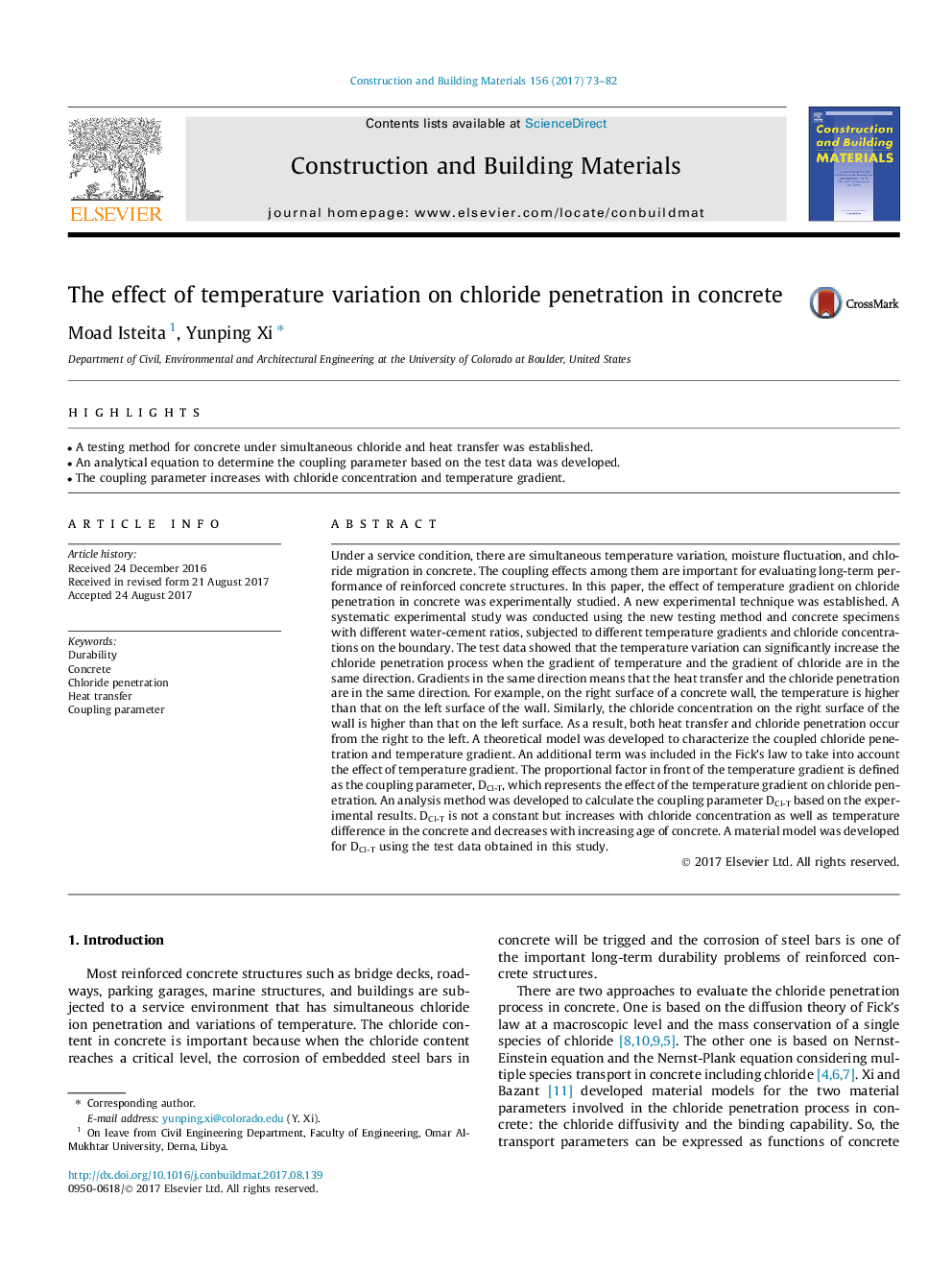| کد مقاله | کد نشریه | سال انتشار | مقاله انگلیسی | نسخه تمام متن |
|---|---|---|---|---|
| 4912648 | 1428750 | 2017 | 10 صفحه PDF | دانلود رایگان |
عنوان انگلیسی مقاله ISI
The effect of temperature variation on chloride penetration in concrete
ترجمه فارسی عنوان
اثر تغییرات دما بر نفوذ کلر در بتن
دانلود مقاله + سفارش ترجمه
دانلود مقاله ISI انگلیسی
رایگان برای ایرانیان
کلمات کلیدی
طول عمر بتن، نفوذ کلرید، انتقال گرما، پارامتر جفت شدن
موضوعات مرتبط
مهندسی و علوم پایه
سایر رشته های مهندسی
مهندسی عمران و سازه
چکیده انگلیسی
Under a service condition, there are simultaneous temperature variation, moisture fluctuation, and chloride migration in concrete. The coupling effects among them are important for evaluating long-term performance of reinforced concrete structures. In this paper, the effect of temperature gradient on chloride penetration in concrete was experimentally studied. A new experimental technique was established. A systematic experimental study was conducted using the new testing method and concrete specimens with different water-cement ratios, subjected to different temperature gradients and chloride concentrations on the boundary. The test data showed that the temperature variation can significantly increase the chloride penetration process when the gradient of temperature and the gradient of chloride are in the same direction. Gradients in the same direction means that the heat transfer and the chloride penetration are in the same direction. For example, on the right surface of a concrete wall, the temperature is higher than that on the left surface of the wall. Similarly, the chloride concentration on the right surface of the wall is higher than that on the left surface. As a result, both heat transfer and chloride penetration occur from the right to the left. A theoretical model was developed to characterize the coupled chloride penetration and temperature gradient. An additional term was included in the Fick's law to take into account the effect of temperature gradient. The proportional factor in front of the temperature gradient is defined as the coupling parameter, DCl-T, which represents the effect of the temperature gradient on chloride penetration. An analysis method was developed to calculate the coupling parameter DCl-T based on the experimental results. DCl-T is not a constant but increases with chloride concentration as well as temperature difference in the concrete and decreases with increasing age of concrete. A material model was developed for DCl-T using the test data obtained in this study.
ناشر
Database: Elsevier - ScienceDirect (ساینس دایرکت)
Journal: Construction and Building Materials - Volume 156, 15 December 2017, Pages 73-82
Journal: Construction and Building Materials - Volume 156, 15 December 2017, Pages 73-82
نویسندگان
Moad Isteita, Yunping Xi,
